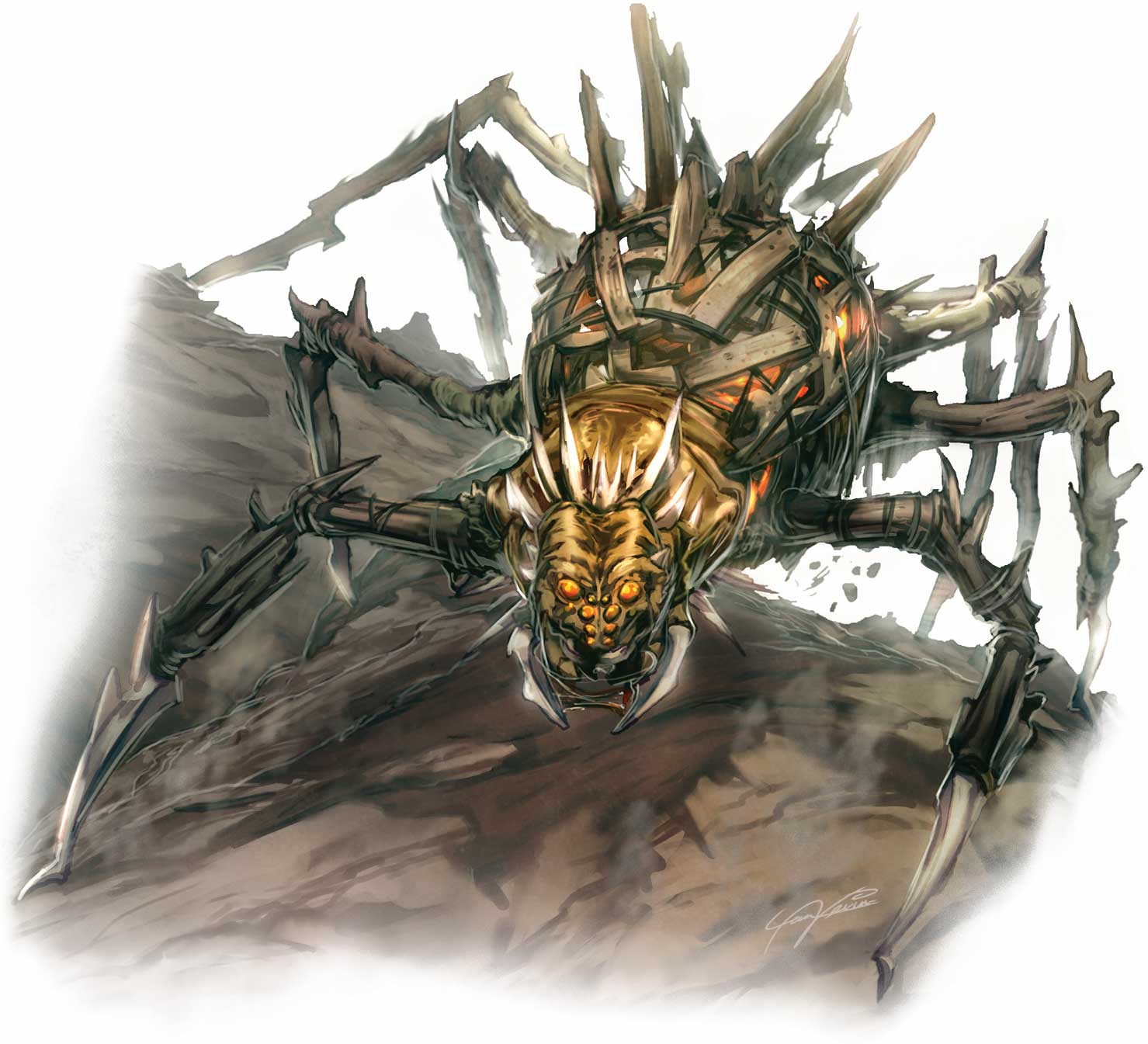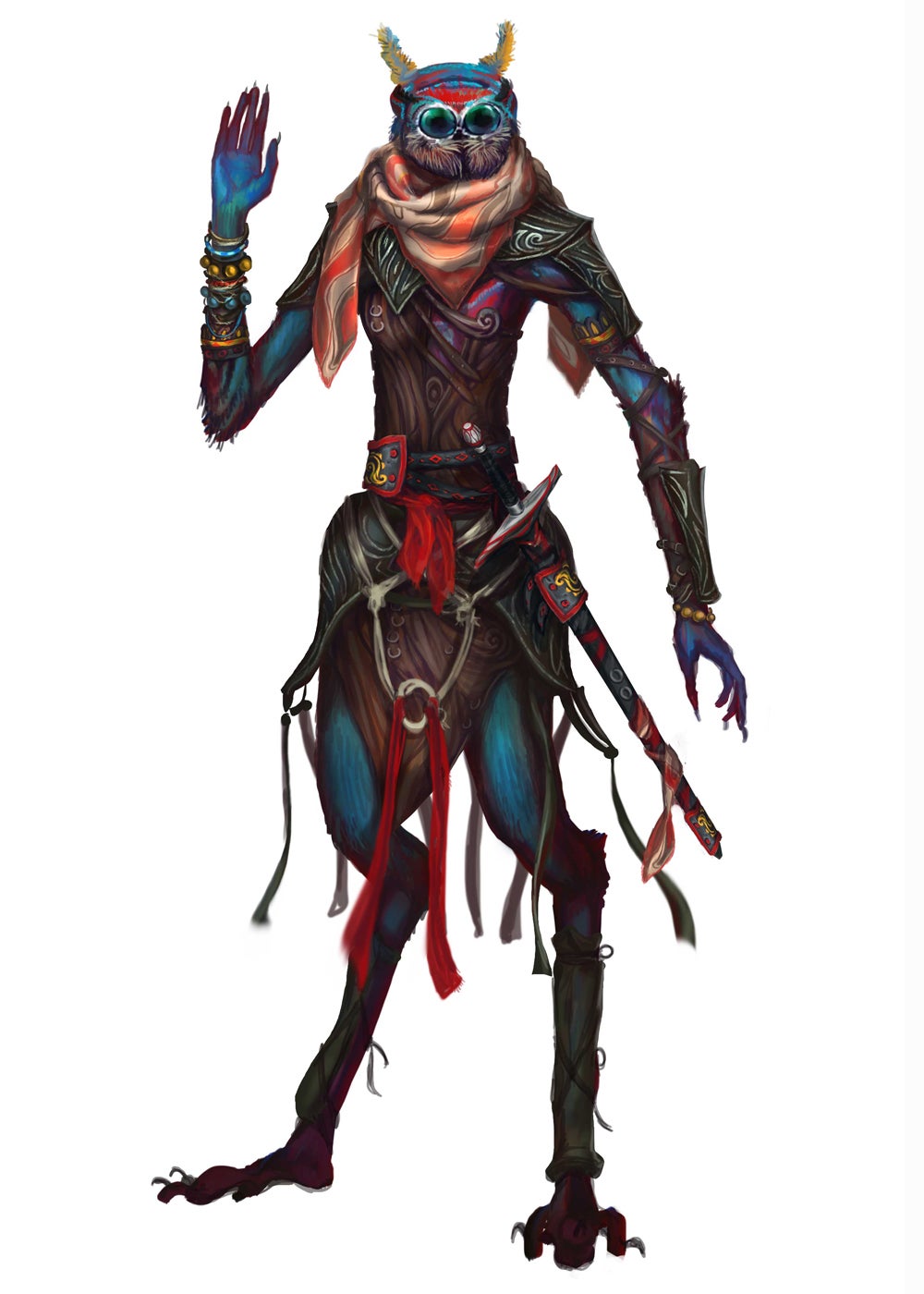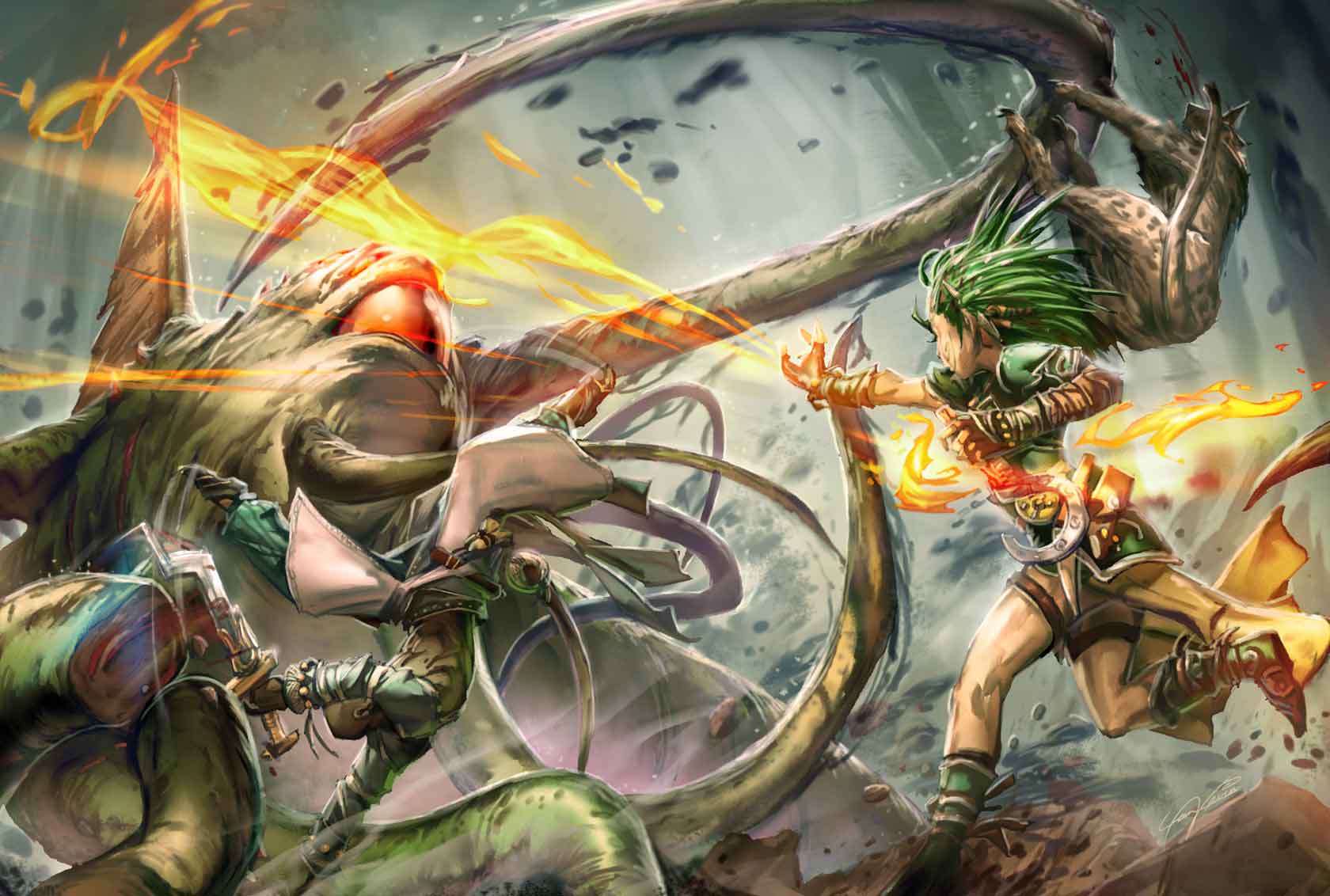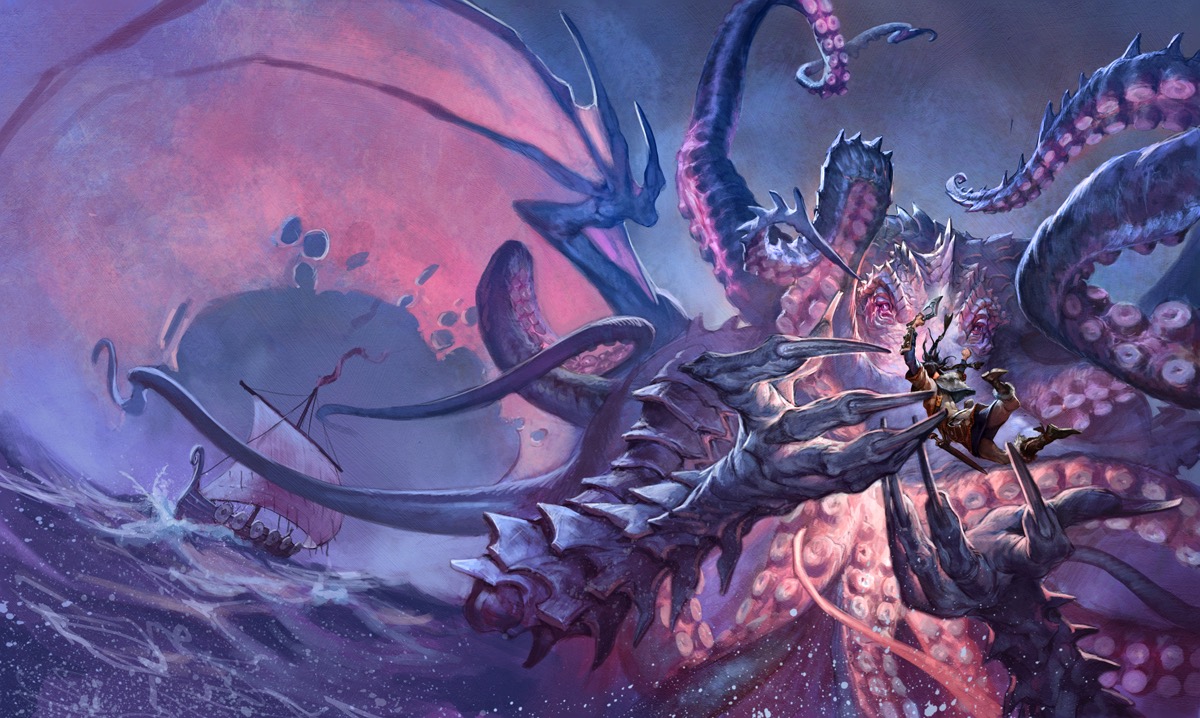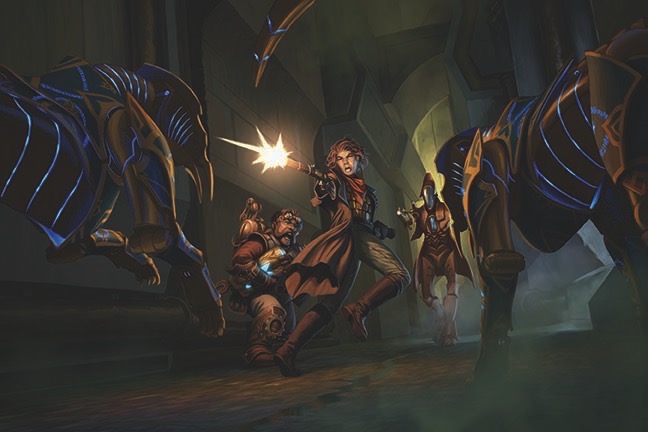As you might tell from a previous article, I enjoy revisiting some of my older cre8ions… ahem, I mean, I enjoy revisiting some of my older creations to add more content or provide a different perspective. This is no different. After having quite some time to reflect on my previous work, I’ve decided to once again go over my eight-legged darlings and provide additional content. Hindsight is 20-20, after all. Or in this case, 20-20-20-20-20-20-20-20.
Hello and welcome to Eldritch Excursion, the blog that plunges the all-grasping hand of mechanics elbow-deep through the gooey slop of time itself to retrieve the most delicious nuggets of flavor. Today I’ll be presenting a sort of alternate-reality version of the Anadi with a different set of statistics. Think of it as a different timeline, or another dimension, or maybe as a replacement for the original version if your home game’s GM is so inclined. While it isn’t made with Paizo’s blessing, I can safely say that it’s made with love.
Anadi
Anadi in their true form resemble humanoid spiders with a variety of colorations. Some tones look simple or muted while other remain striking and vibrant, with most patterns inherited from an anadi’s parentage. Anadi typically have spindly limbs and range from five feet to six and a half feet tall. Females are typically larger than males, but the extremes in size are not exclusive to either.
All anadi possesses the ability to transform into a human guise. This form can resemble any human ethnicity, but it’s usually one that blends in with the region of an anadi’s hatching. Anadi reach physical maturity after 13 years, going through multiple phases of molting along the way. A typical anadi lives to be about 80 years old.
Anadi
[Rare]
Hit Points 8
Size Medium
Speed 25 feet
Ability Boosts Dexterity, Free
Languages Anadi, Mwangi. Additional languages equal to your Intelligence modifier (if positive). Choose from Draconic, Elven, Gnoll, Iruxi, Orcish, Sylvan, and any other languages to which you have access (such as the languages prevalent in your region).
Traits Anadi, Humanoid
Change Shape You gain the Change Shape ability
Change Shape [One Action]
[Anadi] [Arcane] [Concentrate] [Polymorph] [Transmutation]
You change into your human form or true form. Each form has a specific, persistent appearance. In your human form, you can’t use unarmed attacks granted by your ancestry. Using Change Shape counts as creating a disguise for the Impersonate use of Deception.
Fangs You were born with a natural means for hunting and self-defense. You gain a fangs unarmed attack that deals 1d6 piercing damage. Your fangs are in the brawling group and have the finesse and unarmed traits.
Additional Heritages
The following new heritages are available to anadi. In the case of Adaptive Anadi, the version presented here is intended to replace its predecessor.
Adaptive Anadi
You descend from a line of anadi who worked to perfect their transformation magic, allowing them to integrate into a wider variety of cultures. Choose a common humanoid ancestry of medium or small size. Your human form is replaced with a form that matches this choice. You also gain the Adopted Ancestry feat for your chosen humanoid ancestry.
Diving Anadi
Generations of living near lakes and rivers helped you develop waterproof webbing to make ‘air bags’ for living and hunting beneath within the depths. You gain a swim speed of 10 feet and the Breath Control feat.
Leaping Anadi
Your powerful legs and relatively lightweight body allow you to leap impressive distances at a moment’s notice. You become trained in Athletics (or another skill, if you’re already trained in Athletics) and you gain the Quick Jump feat.
Ancestry Feats
These ancestry feats are compatible with both versions of the anadi. Note that the Hybrid Shape feat has no effect for this article’s rewriting of the ancestry’s rules and should not be taken.
Adaptive Eyes Feat 1
Prerequisites Adaptive Anadi with a chosen ancestry that naturally has low-light vision or darkvision
You work towards refining your chape changing abilities to minimize the discrepancies between yourself and your fellows. While in the form of your chosen ancestry, you gain low-light vision.
Special If your chosen ancestry has darkvision, you may choose this feat a second time. If you do, you gain darkvision instead of low light vision.
Defender Form Feat 1
When using your Change Shape ability, you may instead assume a spider form. Your spider form counts as your true form for the purpose of ancestry feats. Your fangs attack increases to 1d8 damage and gains the forceful trait. You also aren’t flat-footed when climbing in your spider form. However, in your spider form you can’t use weapons, shields, or other held items of any sort, and you are limited in what actions you can take that have the manipulate trait. The only manipulate actions you can take are to Cast a Spell with somatic components, weave silk or webbing, or simple Interact actions such as opening an unlocked door. Your spider legs can’t perform actions that require fingers or significant manual dexterity, including any action that would require a check to accomplish. The GM might determine other manipulate actions are appropriate for your spider legs.
New Material: Webweave
This versatile material is most often created by anadi, awakened spiders, and druids with an affinity for arachnids. Any item primarily made through weaving can be made out of webweave, such as clothing or rope. Webweave naturally degrades without treating from special preservative herbs and oils and only lasts from one week to one month depending on wear and tear. This makes them impractical for an average adventurer, but highly desirable for anyone able to produce it on a regular basis.
As the materials are usually abundant and easy to produce on a smaller scale, webweave only costs one fifth of the item’s typical price. However, this price is charged each time the item is maintained by a webweave provider. The cost of permanently preserving webweave items makes them roughly as expensive as their conventional counterparts, though some works of vanity are made more valuable through the use of rarer herbs and magically infused oils.
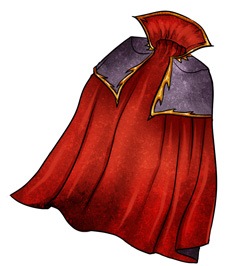
If it didn’t come from the tailor’s actual physical body, can you really say they put effort into it?
And there we go. Players have more options, and I get to lay one of my deepest regrets to rest. (Look at the Web Weaver feat, and then look at the price of rope, and you’ll see what I mean.) Come back next time and I’ll explain how the founding fathers clearly intended for the second amendment to give me access to high level evocation magic.

